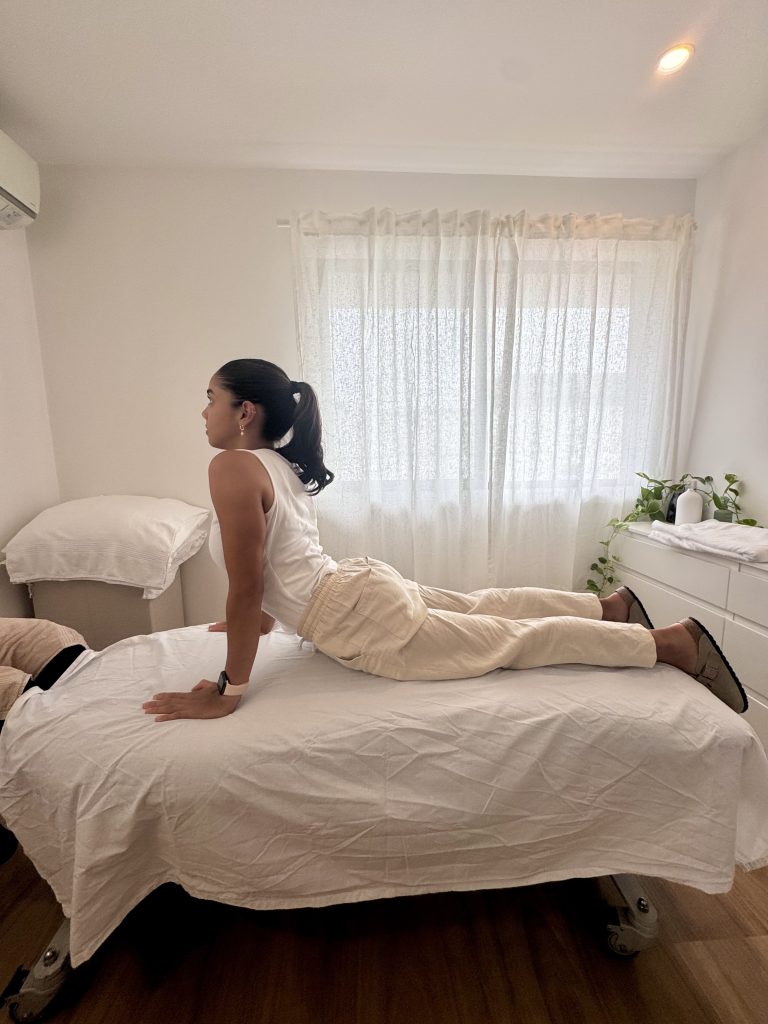MCKENZIE METHOD CASE STUDY
Case Study: Acute Lower Back Pain Treated with the McKenzie Method and hands on therapy.
Patient Overview:
- Age: Mid 30s
- Occupation: Chef
- Family: Mother of two children
- Mechanism of Injury: Acute back flare-up following a Pilates exercise involving a flexion-based movement (bending forward)
- Symptoms: Difficulty walking and sitting, pain localized in the lower back, sometimes radiating down the lateral left leg past the knee and sharp in nature on specific
Assessment
Posture:
- The patient experienced pain while sitting, which improved when she placed a rolled-up towel behind her lower back.
Movement Triggers:
- Forward bending (flexion)
- Side bending to the left
Physical Exam:
- Orthopedic tests for disc-related conditions were negative
- Provisional Diagnosis: Left-sided discogenic pain with L5 nerve irritation (radiculopathy)
Treatment Plan
We started with the McKenzie Method, which focuses on a movement that helps relieve irritation of the spine.
McKenzie Side Bending Exercise:
- The patient performed side bending exercises against a wall, which led to improved movement and reduced pain.
- After the patient successfully responded to the first round, we continued with additional rounds of McKenzie side bending exercises to confirm she had a directional preference (her body responded well) to that movement.
Manual Therapy:
- Hands-on treatments included massage, dry needling, and trigger point therapy to release tension in the hip flexors, glutes, and lower back.
Postural Correction:
- We noticed that the patient’s right hip was elevated, so we worked on correcting her posture.
Taping:
- To prevent further aggravation, we applied rigid tape to limit flexion (forward bending), helping to stabilise the area and reduce painful movements.
Education & Home Care
We focused on educating the patient about self-management and recovery.
Limit Flexion-Based Movements:
- Avoid movements that involve bending forward (flexion).
Correct Sitting Position:
- Use a rolled-up towel to support the lower back while
McKenzie Side Bend Exercise:
- Perform the McKenzie side bend exercise every hour for 10 The goal is to gently move into the resistance to loosen up the area and gain more movement
- It’s normal for the pain cycle to take some Your body needs time to retrain and recognize that it is safe to move again.
- Use the McKenzie method even when in pain to help reduce discomfort and “centralize” the pain (move it from the extremities back toward the center of the body)..
Self-Testing:
- Regularly test your pain triggers (forward bending and side bending to the left) to ensure you’re on the right track with your recovery.
Spinal Education:
- Understand how your spine moves on different movements and learn how to avoid overloading it to prevent further injury.
Prognosis
First Week:
Two treatments in her acute phase, with the focus on pain management and mobility to keep her working.
Strengthening:
As the pain became more centralized, we began strengthening exercises for her glutes. This typically starts around the third treatment.
Long-Term Plan:
- Once pain is manageable (below 5/10), we focus on lifestyle modifications and strength exercises. This helps reduce reliance on treatments.
- Treatment intervals are decreased from weekly to biweekly and then monthly as the patient gains strength and mobility.
Maintenance:
After the patient is pain-free, we recommend periodic maintenance appointments (every 1-2 months) to keep her moving well and prevent future flare-ups.
By Dwan Rosairo – Clinical Myotherapist




